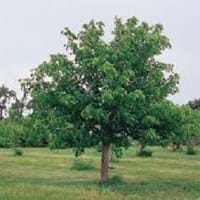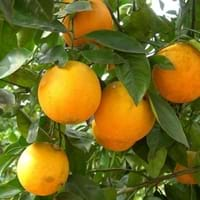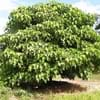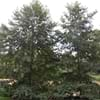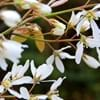Life Span
Perennial
Perennial
Origin
United States, Mid-Atlantic United States, Southeastern United States, Central United States
Southeastern Asia, India, China
Types
Not Available
Louisiana sweet orange is a type of sweet orange which is a type of oranges
Number of Varieties
Not Available
Habitat
Forest edges, Forest margins, Tropical regions
Dry areas, Warmer regions
USDA Hardiness Zone
3-7
9-11
Sunset Zone
Not Available
H1, H2, 8, 9, 12, 13, 14, 15, 16, 17, 18, 19, 20, 21, 22, 23, 24
Habit
Oval or Rounded
Oval or Rounded
Flower Color
Light Yellow, Yellow green, Ivory
White, Red, Purple
Flower Color Modifier
Bicolor
Bicolor
Fruit Color
Tan, Sienna
Green, Orange
Leaf Color in Spring
Green, Dark Green
Dark Green
Leaf Color in Summer
Dark Green
Dark Green
Leaf Color in Fall
Orange, Tan
Dark Green
Leaf Color in Winter
Not Available
Light Green
Leaf Shape
Compound
Ovate
Plant Season
Spring, Summer, Fall
Spring, Summer, Fall, Winter
Sunlight
Full Sun, Partial Sun
Full Sun
Growth Rate
Medium
Medium
Type of Soil
Clay, Loam
Loam, Sand
The pH of Soil
Acidic, Neutral
Acidic, Neutral, Alkaline
Soil Drainage
Average
Well drained
Bloom Time
Late Spring
Early Spring, Spring, Late Winter
Tolerances
Not Available
Drought
Where to Plant?
Ground
Ground
How to Plant?
Seedlings
Seedlings
Plant Maintenance
Medium
High
Watering Requirements
Average Water Needs, Keep the ground moist but not water-logged
Reduce watering during fall, Requires regular watering
In Summer
Lots of watering
Average Water, Ample Water
In Spring
Moderate
Adequately
In Winter
Average Water
Alternate Days
Soil pH
Acidic, Neutral
Acidic, Neutral, Alkaline
Soil Type
Clay, Loam
Loam, Sand
Soil Drainage Capacity
Average
Well drained
Sun Exposure
Full Sun, Partial Sun
Full Sun
Pruning
Remove damaged leaves, Remove dead branches, Remove dead leaves
Prune to stimulate growth, Remove dead leaves
Fertilizers
All-Purpose Liquid Fertilizer
fertilize every 2-3 weeks while growing, fertilize in growing season, fertilize in spring
Pests and Diseases
Red blotch
Aphids, Caterpillars, Mealybugs, Mites, Rust, Scale, Spider mites, Whiteflies
Plant Tolerance
Drought
Drought
Flower Petal Number
Not Available
Single
Fragrant Bark/Stem
No
Yes
Foliage Texture
Coarse
Medium
Foliage Sheen
Matte
Glossy
Attracts
Birds
Birds, Butterflies
Allergy
Not Available
Not Available
Aesthetic Uses
Not Used For Aesthetic Purpose
Showy Purposes
Beauty Benefits
Not Available
Improve hair condition, Improve skin condition, Making cosmetics, Removes dandruff
Environmental Uses
Air purification
Not Available
Medicinal Uses
Asthma, Cough, Intestinal irritations, Rheumatism
Vitamin C
Part of Plant Used
Fruits
Fruits
Other Uses
Culinary use
Used As Food
Used As Indoor Plant
No
No
Used As Outdoor Plant
Yes
Yes
Garden Design
Screening / Wind Break, Shade Trees
Container, Edible, Feature Plant, Fruit / Fruit Tree, Hedges, Screening / Wind Break, Topiary / Bonsai / Espalier, Tropical
Botanical Name
AESCULUS glabra
CITRUS sinensis 'Louisiana Sweet'
Common Name
Ohio Buckeye
Louisiana Sweet Orange, Orange
In Hindi
ओहियो बकेये
Lousiana नारंगी
In German
Ohio buckeye
Lousiana Orange
In French
marronnier de l'Ohio
Lousiana d'orange
In Spanish
Ohio castaño de indias
Lousiana naranja
In Greek
Οχάιο Buckeye
Lousiana πορτοκαλί
In Portuguese
Ohio Buckeye
Lousiana laranja
In Polish
Ohio kasztan
Lousiana pomarańczowy
In Latin
Ohio buckeye
louisiana aurantiaco
Phylum
Magnoliophyta
Not Available
Class
Magnoliopsida
Not Available
Family
Hippocastanaceae
Rutaceae
Clade
Angiosperms, Eudicots, Rosids
Not Available
Tribe
Not Available
Not Available
Subfamily
Hippocastanoideae
Not Available
Number of Species
Not Available
Season and Care of Ohio Buckeye and Louisiana Orange
Season and care of Ohio Buckeye and Louisiana Orange is important to know. While considering everything about Ohio Buckeye and Louisiana Orange Care, growing season is an essential factor. Ohio Buckeye season is Spring, Summer and Fall and Louisiana Orange season is Spring, Summer and Fall. The type of soil for Ohio Buckeye is Clay, Loam and for Louisiana Orange is Loam, Sand while the PH of soil for Ohio Buckeye is Acidic, Neutral and for Louisiana Orange is Acidic, Neutral, Alkaline.
Ohio Buckeye and Louisiana Orange Physical Information
Ohio Buckeye and Louisiana Orange physical information is very important for comparison. Ohio Buckeye height is 910.00 cm and width 760.00 cm whereas Louisiana Orange height is 460.00 cm and width 300.00 cm. The color specification of Ohio Buckeye and Louisiana Orange are as follows:
Ohio Buckeye flower color: Light Yellow, Yellow green and Ivory
Ohio Buckeye leaf color: Green and Dark Green
Louisiana Orange flower color: White, Red and Purple
- Louisiana Orange leaf color: Dark Green
Care of Ohio Buckeye and Louisiana Orange
Care of Ohio Buckeye and Louisiana Orange include pruning, fertilizers, watering etc. Ohio Buckeye pruning is done Remove damaged leaves, Remove dead branches and Remove dead leaves and Louisiana Orange pruning is done Prune to stimulate growth and Remove dead leaves. In summer Ohio Buckeye needs Lots of watering and in winter, it needs Average Water. Whereas, in summer Louisiana Orange needs Average Water, Ample Water and in winter, it needs Alternate Days.
